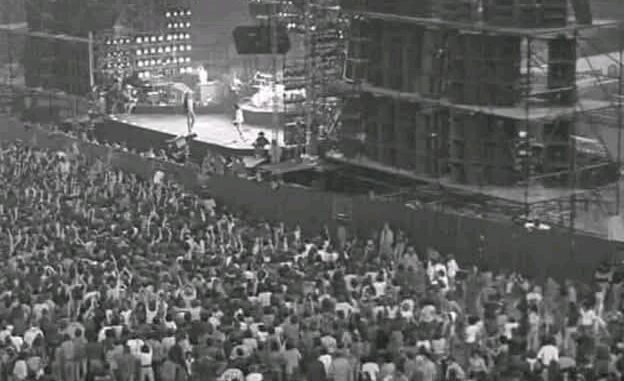
Led Zeppelin were known for their explosive live shows, fueled by a wall of sound that shook every venue they entered. With massive stacks of Marshall amplifiers towering behind them, the band created an electrifying, almost overwhelming experience that set a new standard for rock performances in the 1970s.
From their earliest tours in 1969 to their final shows in the early ’80s, Led Zeppelin’s concerts were legendary for their sheer volume, intensity, and improvisational brilliance. Jimmy Page, armed with his Gibson Les Paul and iconic double-neck guitar, often led the sonic assault, weaving intricate solos over a thunderous foundation laid down by John Paul Jones and John Bonham. Robert Plant’s soaring vocals cut through the chaos, commanding audiences with raw emotion and primal energy.
The band’s stage setup was as ambitious as their music. Massive stacks of Marshall and Orange amplifiers lined the back of the stage, ensuring that every riff and drumbeat could be felt as much as heard. The power of their sound wasn’t just about volume — it was about creating a full-body experience for the audience. Every note resonated through the crowd, making Led Zeppelin concerts unforgettable events rather than just performances.
Beyond the sound, their live shows were feats of endurance and creativity. Songs often stretched far beyond their studio versions, with extended jams, improvisations, and sudden shifts in tempo and style. Tracks like “Dazed and Confused” could evolve into 30-minute epics, featuring bowed guitar solos and thunderous drum breakdowns.
Led Zeppelin also revolutionized the visual aspect of rock shows. They were among the first to incorporate elaborate light shows, giant projection screens, and sophisticated stage effects, creating a complete sensory assault. Each performance felt unpredictable, dangerous, and alive — a true testament to the spirit of rock and roll.
Their dedication to live performance built an almost mythic reputation. Without relying heavily on television appearances or frequent interviews, Led Zeppelin let their concerts speak for them. Word of mouth, fueled by mind-blowing live experiences, propelled them to global superstardom.
Even decades later, the echoes of those legendary shows still influence rock bands around the world. Led Zeppelin’s ability to turn every performance into an earth-shaking event remains one of their greatest legacies, reminding fans and musicians alike that live music, when done right, can be pure magic.
Leave a Reply